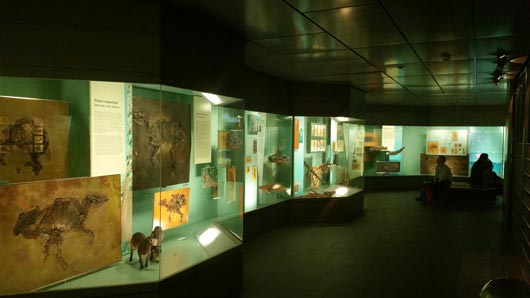Messel Shales Provide New Evidence of Lizard-Snake Divide
Fossil Discovery Sheds Light on Squamata Evolution
One of the most important fossil sites in the world for early Tertiary life is a large quarry area in Messel, near Frankfurt in southern Germany. Around fifty million years ago this location was a large freshwater lake, surrounded by dense tropical forest. The lake bed preserves the remains of plants and animals in amazing detail, preserving a record of an ecosystem dating from the Palaeogene Period.
Messel Shales
The Messel shales are an UNESCO World Heritage site, such is their geological importance, providing evidence of the diversification of mammal genera after the dinosaur mass extinction. This location has provided a number of very important fossils, such as over seventy fossil horses, with the largest standing only sixty centimetres tall at the shoulder. Now an scientific analysis of one particular fossil, the only specimen found to date is helping scientists to identify when limbless lizards evolved and their relationship to other members of the Order Squamata (snakes).
Although genetic studies suggest that snakes are related to monitor lizards and iguanas, they are anatomically more similar to a group of earthworm-like creatures called worm lizards. Now a new study helps clear the confusion, suggesting that worm lizards are related not to snakes, but to Lacertids, a group of limbed lizards found in Europe, Africa and Asia.
Writing in the journal Nature, researchers identify a 47-million-year-old fossilised lizard from the Messel shales that appears to be a common relative to both Lacertids and worm lizards.
The Messel Shales Gallery at the Senckenberg Museum

The atmospheric Messel gallery at the Senckenberg Museum (Frankfurt). Picture credit: Everything Dinosaur.
Picture credit: Everything Dinosaur
Johannes Müller, a palaeozoologist at the Natural History Museum (Berlin) and one of the research scientists involved in this project stated that the fossil suggests:
“This was the transitionary animal, it was exactly what we were looking for. It indirectly implies that identifying burrowing worm lizards with snakes is a mistake.”
Dr Müller and his co-authors used X-ray computed tomography, or CT scans, to study the skull of the fossilised lizard and compare it with those of extant lizards and snakes. They found that the fossilised lizard had a thickened, capsule-like skull with no external ear opening, similar to the anatomical structure of worm lizards.
The lizard fossil has been formally described and named Cryptolacerta hassiaca, it is less than three inches in length and is the only known specimen of its kind found to date.
To view models of Cenozoic mammals and other prehistoric creatures: Prehistoric Animal Models.

